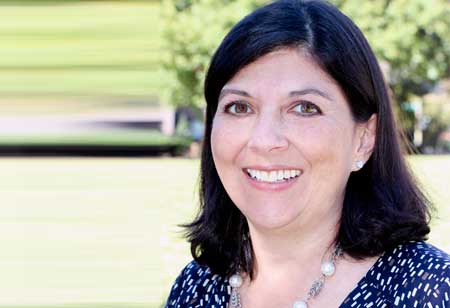Thank you for Subscribing to Healthcare Business Review Weekly Brief

Leveraging Data and Technology to Address Community Health Needs
Healthcare Business Review
In response to the findings of its latest triennial Community Health Needs Assessment (CHNA), Parkland Health, Dallas County’s safety net hospital, is utilizing technology and data in different ways to increase access to care and reduce the number of patients who are lost to care.
Parkland’s 2019 CHNA revealed that five southern Dallas County ZIP codes with predominantly African American and Hispanic populations are characterized as “desert zones,” meaning they lack sufficient infrastructure and resources for childcare, healthcare, public transportation, internet, etc. Unsurprisingly, these ZIP codes have the highest uninsured rates, morbidity, and mortality rates for diabetes, hypertension, pediatric asthma, and women are more likely to be diagnosed with breast cancer in advanced stages when compared with women from other Dallas County ZIP codes. Nonetheless, the most troublesome finding is the 20 years life expectancy gap between populations who live in these five ZIP codes and those who live in more affluent ZIP codes. Striving to improve the health outcomes in these populations and challenged by infrastructure gaps, Parkland is leveraging technology to bring services into the heart of these communities, accelerate access to care and maintain patients engaged in care.
In 2020, Parkland began building a network of community hubs that offer no-cost ongoing diabetes and blood pressure screenings and insurance coverage assessments by partnering with trusted community-based organizations such as food banks, churches, and social services organizations that have access to stable income internet. Thanks to these partnerships, Parkland can improve access to care with two important tools:
• electronic medical record (EMR) platform and,
• insurance coverage eligibility platform.
Recently, Parkland added technology and infrastructure at some community hubs to provide virtual care. As of December 2021, Parkland has established six hubs where Community Health Workers (CHW), who are recruited and hired from these five ZIP codes, work in tandem with Parkland’s financial eligibility specialists to complete health and insurance coverage screenings. Using an EMR workflow developed exclusively for community screenings purposes, CHWs record real-time glucose test results and blood pressure measurements into the platform. This workflow also allows CHWs to schedule appointments when test results require the patient to follow up with a provider within three months. Concurrently, the patient’s insurance coverage eligibility assessment begins, providing patients the opportunity to have coverage by their follow-up appointment. Nurse Navigators engage patients in planning prior to their follow-up appointments by reviewing data entered in the EMR, consequently reducing the number of patients lost to care.
As stated above, African American and Hispanic women residing in southern Dallas County are more likely to be diagnosed with advanced breast cancer.
Parkland’s CHNA Breast Health Program aims to reduce the number of women who are diagnosed in the late stages of breast cancer by:
• Increasing the number of women who get a mammogram according to clinical guidelines, and
• Decreasing the number of women with abnormal mammogram results lost to care, i.e., do not receive their follow-up services according to clinical guidelines.
These two inversely proportional goals involve pulling and monitoring data from different platforms. To automate this complex multistep process, Parkland integrates screening results stored in Parkland’s mammography reporting and tracking software with data from its EMR system. This data integration allows Nurse Navigators to engage women who have an abnormal screening mammogram and ensure patients have the information to make informed decisions regarding their care plan. Patients are also linked to resources they need, such as transportation, childcare, and insurance coverage to complete the necessary follow-up appointments in accordance with guidelines or until cleared from treatment. Additionally, Parkland offers screenings beyond regular business hours and on weekends at non-conventional sites such as churches, grocery stores, or strip mall parking lots to increase access to mammogram services. Between 2020 and 2021, Parkland has decreased the percentage of women lost to care from 16.7 percent to less than 2 percent.
Parkland’s approach to leveraging data and technology to build a network of community hubs as the means to increase access to care and engage patients in their own care is a practical solution worth exploring.
Lastly, in partnership with Parkland Center for Clinical Innovation (PCCI), Parkland has created a sophisticated predictive model to identify children at risk for asthma and deployed an interactive text notification program for disease management. Parents of children who meet the risk criteria are contacted by a CHW who links them to a provider if they don’t have one and encourages them to enroll in the text program. The texts are designed to assist parents with medication adherence and follow their asthma treatment plan. Parents’ responses are gathered and shared with their pediatrician regularly. The pediatrician uses the information for treatment planning and management with parents.
Parkland’s approach to leveraging data and technology to build a network of community hubs as the means to increase access to care and engage patients in their own care is a practical solution worth exploring until the infrastructure of services in “desert zones” in Dallas County is addressed.









